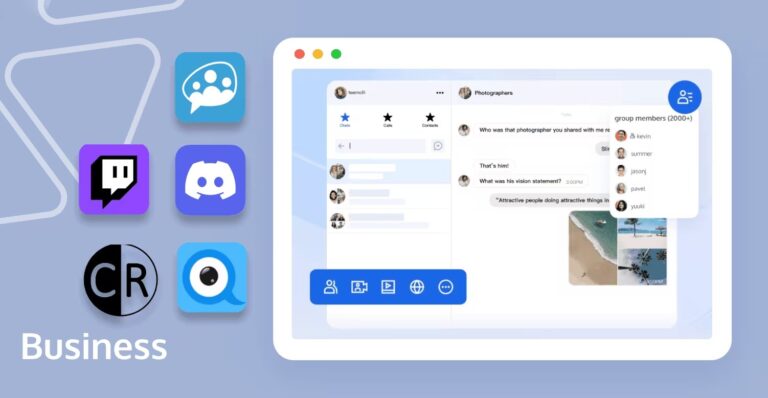How to Manage Multiple Brands with HubSpot Business Units
It is often not easy when you have several brands within a single company because it becomes tricky to ensure different communication strategies and customer experiences for each brand. For businesses struggling with this problem, there is good news in the form of HubSpot Business Units, which allow dealing with several brands from one HubSpot portal while maintaining the unique identity of each brand.
Now, let’s delve deeper into the way HubSpot Business Units operate and how these help in driving numerous multiple brand initiatives.
What Are HubSpot Business Units?
HubSpot Business Units are aimed at connecting different brands of an organization into a single work zone while using tools for marketing, sales, and services while keeping in mind the individuality of each brand. Organizations especially that are big, having a number of subsidiaries, or have many affiliated brands will find this feature important.
Every BU in HubSpot works like an isolated network, thus corporate entities get the ability to design and develop marketing assets including emails, forms, landing pages, and reports for distinct brands out of one another; however they use the similar HubSpot portal to get all. This way it makes it possible for business to be on the lookout for increasing efficiencies and removing frictions while consolidating for brand signals to be consistent across its brands while not losing the ability to hone marketing initiatives for different target markets.
Setting Up HubSpot Business Units
Establishing HubSpot Business Units is easy. After you get permission for your organization to enable the Business Units feature (only available for the Marketing Hub Enterprise), you can make a new unit through HubSpot settings. The structure can then be set up with branding attributes like logos, brand color and domain for the new specific units.
Business Units enable you to allocate specific assets to a Business Unit, therefore your customers, emails, workflows and reports will be categorized under the Business Unit. This segmentation confirms that your marketing communication is appropriate for each market segment, and it also provides a simpler manner of analyzing and evaluating the impact of marketing communication for each Business Unit.
Centralized Management With Segmentation
I believe that the major benefit of using HubSpot Business Units is that you can have all your brands in one place, while still being quite separated from each other. For instance, while posting on social networking sites or sending mailers, you can edit a different template for each brand at a time without signing in and out of different HubSpot accounts.
The contact information can be divided and managed according to Business Unit and per brand, so that specific correspondences reach the correct client. This feature will help to prevent confusion and nuisance in directing customers, which might otherwise be interested in only saying a particular brand. With HubSpot, you can add custom fields to contacts and you are able to create different lists for all types of contact so that when a specific type of contact is emailed, each will get a set of emails relevant to their experience with each brand.
Custom Reporting for Each Brand
This means that custom reporting for each of the brands would be appropriate to allow them operate with reasonable efficiency, given the highly competitive environment they are attempting to penetrate.
Indeed, an effective branding strategy means that a company needs to report on numerous brands, and it is often very difficult to track the performance of each brand separately. HBUs are packed with a terrific reporting tool that enables a user to report each brand’s performance apart from the others.
You can also have an overview of measures like the email open rates, the overall header and landing site conversion as well as consumer interactions for each Business Unit. This makes it easier for the marketing department to evaluate what works for each campaign and make the right changes that fits each brand. Furthermore, due to the fact that HubSpot has flexible reporting features where businesses have the ability to create their own dashboard, they can readily see in the dashboards of each Business Unit what works and what does not.
Distinct Branding Across Assets
It is important that each business unit has a different branding since customers who visit these units expect to find a different experience. HubSpot Business Units enable you to set up different branding for every touchpoint a customer might see leaving no room for mixing up different brands’ templates, emails, landing pages, or forms.
Streamlined Workflows and Automation
Another seminal benefit of employing HubSpot Business Units is the provision of the function to set up brand-specific processes and automation. With multiple brands, all brands could have different paths through the marketing and sales funnel and with different moments that prompt action. They also help you to develop Business Unit workflows so that the automation you put in place lets you do things in ways that are appropriate to the particular customers of each brand.
Conclusion
HubSpot Business Units provide a robust tool for companies dealing with a number of brands; they can keep each brand distinctive while having all the brands’ operations under one roof. Some of these include the ability to segment customer lists, the ability to brand differently, and the ability to generate different reports for each of the Business Unit, enabling a business to do marketing and selling across the different brands but without compromising on quality. With HubSpot Business Units, businesses can be confident of the following: Offering its customers a consistent experience while working more efficiently and achieving better overall outcomes for the brands.






